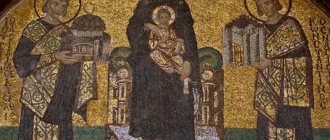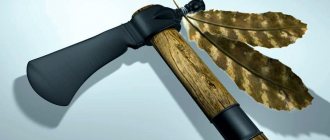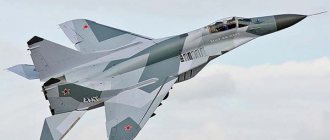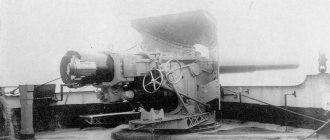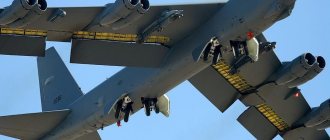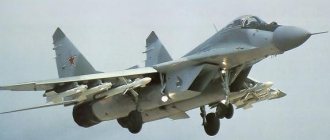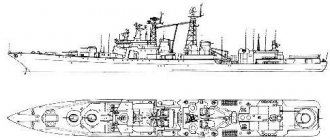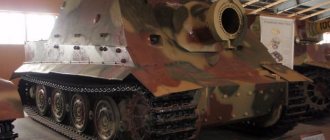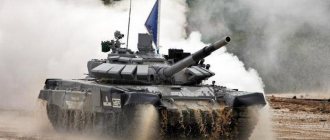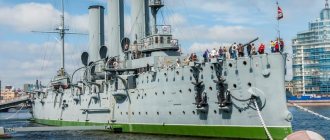After the fall of the Western Roman Empire in 410 AD. Europe entered the period of early feudalism. Cities take first place in the socio-economic and political life of the continent. A new type of social relations in society begins to form - feudal, where there is a division of the ruling circles into overlords and vassals. The political map of Europe takes the form of a patchwork quilt, on which numerous new state entities, kingdoms and duchies, principalities and counties appear. In this situation, the Christian Church stands as a separate entity, retaining the right of political and administrative independence over vast territories.
The described era in history received its definition - the early Middle Ages. It was this period in the development of Europe that can be called the bloodiest and most unstable. Each of those in power strives to strengthen their rights in a certain and isolated territory, to expand their possessions at the expense of weak neighbors. Temporary military-political alliances appear, constant small armed skirmishes smoothly flow into major military confrontations. One war follows another. Military valor is elevated to the rank of the highest virtue. Against this background, a new military class begins to form - the small armed nobility, the descendants of Roman horsemen - the prototype of future medieval knights.
Origin of the concept
Since the reign of Charlemagne, cavalry has appeared in Western Europe. The soldiers served their vassals; they completely refused to run their own households. Warriors devoted their entire lives to service. The etymology of the word "knight" has several roots.
Its meaning was almost the same in different languages:
- French - chevalier, from "cheval" - horse;
- English - knight, horse soldier in armor;
- German - ritter, horseman.
The modified German word has taken root in the Russian language. But in any case, this concept meant a well-armed cavalry warrior.
It was believed that knights, along with priests, feudal lords and peasants, played a significant role in shaping society. They helped eliminate disorder, defended the king, and took part in wars and campaigns. And legends still circulate about the romanticism and exploits of horsemen.
Who are they - knights?
For five long centuries, Europe was an arena of fierce wars, battles and battles. One kingdom replaced another; there was no need to talk about permanent borders of states. Not a single ruler of Europe could boast of the stability of his possessions. Being a warrior, being able to wield a weapon and know combat techniques became the most important element in the formation of a culture of human relations. To know, the ruling elite sought to be not only rich and prosperous, but also strong militarily. Feudal relations contributed to the development of human personal qualities. Cruelty took the form of a person's personal courage, disregard for danger. Weapons were elevated to the rank of a cult, which was worshiped and which determined the status of its owner. War became a craft, tournaments were considered the most favorite entertainment among the nobles, civil society turned into an arena of constant armed conflicts, intrigues and conspiracies.
If we consider chivalry as a rite, then its origins, of course, go back to the era of the Roman Empire. Even then, young people preparing for military service underwent an initiation ritual with the right to bear arms. Horsemen formed the backbone of the Roman army. In the early Middle Ages, this tradition was continued by the Visigoths, who founded their kingdoms in Italy and Spain. Charlemagne continued this idea. Children of wealthy families had their own horse, a full set of combat equipment and represented the main strength of their overlord. From this moment on, initiation into the highest military class became mandatory among noble families and members of the royal families of Europe. In the German principalities and counties, nobles in military service and well armed are called ritter, literally horseman. This name has become stronger in Central and Eastern Europe.
Similar traditions were firmly rooted in Western Medieval Europe. The nobles became large and small feudal lords, whose main occupation was military service in the service of the king or a stronger and richer ruler. In the military aspect, feudal lords are heavily armed horsemen called upon to protect their lord. On the Iberian Peninsula and the Apennines, chivalry took its forms, focusing on mentality and national traditions. Over time, nobles in the service of the king began to be given titles. A knight in medieval Spain was called a hidalgo, in the Italian kingdoms it was a cavalier. In France, knights began to be called chevalier - an armed horseman.
If we consider knighthood as a rank, then in the military hierarchy of those times knights occupied the highest positions. Knighthood was accompanied by a certain ritual of initiation, which focused mainly on religious rites and the solemn swearing of an oath. At first, the basis of knighthood as a military class was based on moral and ethical motives. The knight took an oath to serve God and his overlord. Later, when chivalry became an obligatory attribute of a privileged society, norms of behavior, traditions and responsibilities appeared. The duty to protect the lady, the sick and the suffering was added to the military oath and oath. A person with the rank of knight was in any situation a symbol of power, personifying law, strength and faith. Seeing with what respect they treated their military exploits, deeds and actions, the knights sought to redouble their zeal and zeal. The unwittingly emerging military class became the engine of progress in civil social relations of that time.
Over time, chivalry began to take on different forms, dividing into two areas:
- radical direction (religious knightly orders);
- military-civil (civil service, military affairs).
In both forms, chivalry managed to reach its highest point. Christian orders of chivalry became the main driving force behind European expansion in Eastern Europe and the Middle East. In civil society, knights formed an important element of government and were the mainstay of any army.
Raising young men
Knights were raised in special conditions. According to information from historical documents, the main thing for young men was the ability to wield weapons, sit well in the saddle, dance and sing, and be gallant. Literacy was an optional requirement. The knight might not be able to read or write. For seven years he had to serve an experienced man - clean his weapons and horse, take care of his uniform.
Then the future rider underwent a special initiation rite . This procedure indicated that the young man was moving towards independence and maturity. The ceremony took place in several stages. They put spurs on the boy, girdled him with a sword and gave him a slap in the face - the only one in life that a knight should not answer. After this, the young man had to deftly jump on his horse and pierce the established target with his spear.
Later the ritual was changed under pressure from the church. Before the day of initiation, the young man had to spend the whole night in the chapel praying. At dawn, he laid out his weapons on the altar and dedicated them to God. Then the boy was put on a white silk shirt and a scarlet surcoat. These two colors symbolized purity and the blood that the knight would shed in the name of faith. He also wore brown pants, indicating that after death, every person returns to the earth.
The pommel of the sword was decorated with a silver cross; the double-edged blade meant steadfastness in protecting the poor and weak.
Armor and weapons
The Middle Ages are also called the age of chain mail. But there was little metal for their production, so they were very expensive. And the manufacturing process itself required a lot of effort and time. All the uniforms and weapons of a medieval knight, together with a horse, were valued at 15 mares or 45 milk cows, and this is the farm of one village.
The riders wore high-quality clothing and weapons:
- quilted shirt;
- scale and plate armor, later chain mail;
- chain mail stockings;
- domed helmets;
- shields;
- long spear;
- an iron sword.
Long quilted shirts were put on the naked body of the young man. Less wealthy knights wore armor made of two layers of leather. This caftan was worn over the head or tied at the back. Later, metal scales began to be sewn onto leather parts.
Then chain mail appeared - a special uniform consisting of one or several rows of steel rings. It hung down to the knees and had slits in the back and front for convenience. Chainmail quickly replaced leather armor.
Drop-shaped shields appeared to protect warriors. They were made of leather, lined with bronze for strength. Shields protected knights from arrows, swords and spears.
Metal stockings were put on the young men's legs, and chain mail was supplemented with hoods and long sleeves. The head was protected by a helmet. It was worn over a soft hood. At first it resembled a dome with cheekpieces and a nasal. And at the end of the 12th century, pot-shaped helmets appeared. They covered not only the head, but also the shoulders. The top could be bent forward. At the same time, the internal volume expanded, which reduced the risk of facial injury.
The main weapon of the knights was the spear; it was used to attack the enemy. The equipment was made of an ash shaft and an iron tip. But horsemen could use a spear only after the invention of stirrups. Before this, they had no support to sit up in the saddle. Although the weapon could be called durable, it rarely survived a single tournament.
The spear was not enough to conduct a full-fledged battle. Knights also used swords made of iron. The weapon was long and massive, and nicknames were given to it. King Arthur has Excalibur, Rolland has Durandal. The handles were decorated with precious stones, and the swords themselves were passed from father to son as family heirlooms.
Armor is a symbol of aristocracy
Armor has always been a symbol of aristocracy, not only in Europe, but throughout the world. Even the development of firearms did not put an end to their use. The armor always featured a coat of arms; it was a ceremonial uniform.
They were worn for holidays, celebrations, and official meetings. Of course, ceremonial armor was made in a lightweight version. The last time they were used in combat was in Japan in the 19th century, during the samurai uprisings. However, firearms have shown that any peasant with a rifle is much more effective than a professional warrior with a bladed weapon, dressed in heavy armor.
Features of coats of arms
The knight's coat of arms was depicted on the shield and surcoat. Its main part was geometric in shape, and it was painted with different colors, depicting heraldry and symbolic pictures. If the shield of the coat of arms consisted of several colors, then the surcoat was sewn from fabric of the same shades. At first, coats of arms were used only during military campaigns, but later they migrated into everyday life. They were depicted on furniture and costumes to emphasize the title and rank of a knight.
Since the riders appeared in the ring or battlefield, clad in armor, they could not be distinguished - they looked the same. And so they invented coats of arms - distinctive signs that decorated shields and helmets. Many stories about knights are associated with them. One famous crusader, an Austrian duke, became so dirty with blood during a battle that his white clothes remained clean only under his belt. Upon returning home, he made himself a new coat of arms: a white belt in a red field.
The famous Aragon received a new distinctive sign also on the battlefield.
To admire his courage, King Charles the Bald dipped his fingers in the knight's blood and ran them over the warrior's golden coat of arms. The most complex drawings were made by knights who committed outstanding deeds.
The basis of the coat of arms was the shield.
Its form depended on the country where the warrior lived:
- oval - Italy;
- triangular - Normandy;
- square with a rounded bottom - Spain;
- quadrangular with a pointed end - France;
- figured - Germany.
The coats of arms were decorated with furs, precious metals and stones, and enamel. They could be plain or multi-colored, beveled or crossed. The shades used symbolized the qualities that the knight possessed.
Red - passion and courage, green spoke of love of freedom and hope, blue meant clarity of mind and greatness, purple - power, gold indicated nobility and wealth, silver implied a noble character, black - modesty and sadness.
The older and richer the horseman’s family, the more patterns were depicted on his coat of arms.
Definition of common patterns:
- crane - caution;
- Leo - courage and strength;
- vulture - ferocity;
- unicorn - invincibility;
- wolf - anger;
- cat - independence;
- rooster - belligerence;
- peacock - boasting;
- boar - fearlessness.
They depicted not only animals, but also plants. The lily meant blossoming, the rose meant purity, and the tulip meant openness.
Knight's costume as an indicator of status
The quality and power of the armor served not only for protective purposes, but also served as confirmation of the status of the knight. The stronger the armor, the higher the importance of the person under knightly clothing.
During the period of the Crusades, over their armor, representatives of the privileged class wore a light cloak - a surcoat. It not only provided excellent protection from bad weather, but also clearly demonstrated the family coat of arms and distinctive colors.
Starting from the 13th century, knightly costumes also began to be seen as a way to flaunt luxury. To do this, tunics were worn on top of the protective clothing. The outfits, which reached the middle of the shin in length, were very reminiscent of monastic amices in their cut. Expensive fabrics were used to sew them, and gold inserts and precious stones were used to decorate the patches in the form of coats of arms. Over time, in an effort to demonstrate the luxury of the outer attire, knights began to decorate their tunics not only in the back and chest, but also along the entire length with multiple images of coats of arms.
The desire to impress also affected military armor. Particularly significant in this regard were knightly tournaments organized by barons and major lords in honor of significant events. Tournament participants received an excellent opportunity not only to demonstrate their military prowess, but also to outdo each other with the sophistication of their own vestments and the decoration of their horses. The performances were very spectacular. The only negative is that such “competitions” often brought budget-constrained knights to complete ruin.
4.3 / 5 ( 37 votes)
Lock design
During the Middle Ages, many castles were built. In England alone, over a few years, more than 300 of them were erected. In this era, the first castles were rectangular wooden towers, surrounded by a garden, a moat and a rampart. The donjon consisted of several floors, and one could move from one to another using a ladder. The first was used to store ballast, the second served as a warehouse, and the third was where the feudal lord and his family preferred to live.
Stone structures appeared at the end of the 11th century. This material was used to prevent enemies from burning and destroying castles. Although in the first years of the century, the transitions between floors remained wooden, which is why fires often occurred. The central tower was supplemented with corner ones, and the ditch in front of the fortress wall was filled with water. You could get to the entrance to the knight's castle via a drawbridge.
It was also necessary to overcome one or more forged metal gratings. Usually there were two entrances: one for pedestrians, and the second for knights on horseback. Some castles have retained their original appearance until modern times; the rest are only described in documents and books.
The warriors were very brave . To capture the castle, they had to fill up ditches, put ladders to the walls and climb up them. The besieged often pushed them off the roof, and the women splashed boiling water and hot tar in their faces, sprinkled ash and lime. Because of such difficulties, they tried to burn the castles, and they vented their anger through robberies, drunkenness and violence.
Later, new battering guns were invented and old ones were improved. Antique battering rams and mobile homes were popular, and then petraria appeared. This machine, by means of a counterweight, threw a load along the walls of the castle.
Greek fire was also often used. Special siphons were used to launch a flammable mixture of tar, oil and sulfur into the towers.
The knights were engaged only in military affairs, refused to manage the household on their own, but at the same time they had their own property - castles, stables, estates. All business was carried out by managers and clerks instead of them. They reported to the knights about the condition of the property, looked after the fields and gardens, houses and jewelry.
